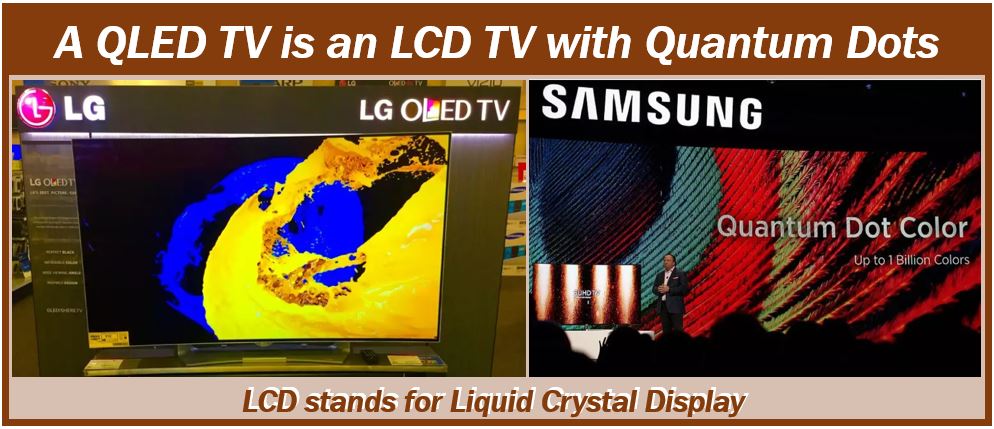Television is an electronic item that can be found in every household round the globe. Coming in different sizes, with hundreds of interesting features, varying prices, this wonderful invention has been one of the most popular electronics.
 The technology used to build television has seen a revolution in the recent years. Let us explore this revolution in technology starting with a brief history about this invention.
The technology used to build television has seen a revolution in the recent years. Let us explore this revolution in technology starting with a brief history about this invention.
In the 1800s it was the mechanical television which was in use. These televisions used mechanically scanning images. These images were then transmitted onto a screen for viewing.
German inventor Paul Gottlieb Nipkow had developed the first mechanical television which sent images through wires using a rotating metal disk. Nipkow however called it an “electric telescope”. The device had 18 lines of resolution.
In the year 1907, two more inventors combined a cathode ray tube with a mechanical scanning system to create a totally new television system. Boris Rosing, a Russian man and an Englishman A.A. Campbell-Swinton were the brains behind this invention.
Scottish inventor John Loggie Baird and American inventor Charles Francis Jenkins invented the earliest models of the mechanical televisions. Both the inventions were made in the early 1920s.
Then came the electronic television in 1927. Invented by a 21-year-old inventor named Philo Taylor Farnsworth, the electronic television was way ahead of the mechanical television in use.
The colour television was conceptualised in 1904 by a German inventor. He however did not have a working model. It was in 1940 that the colour television was first launched.
Digital Broadcasting In Television
The most sweeping change since colour television involved digital broadcasts. Digital employs multiplex signal to deliver more information in the same data stream as compared to analogue waveforms with distinct signals.
The digital HD form includes enhanced 16:9 ratio options such as 1280 x 720, 720p, and 1920 x 1080, 1080i. The analogue form relays images at 640 x 480, 480i, with a 4:3 ratio, which is much lesser than the digital form.
The interlaced signals need half the bandwidth of progressive signals, because they do not separate the images. Due to heightened bandwidth demands even smallest digital signal cannot broadcast on the analogue channels.
Latest developments

The television technology landscape has seen a significant change and improvement. With a plethora of technologies coming up from OLEDs to QLEDs, webOS to Android OS, HD to Ultra HD, making a decision to buy a TV is nothing short of acronym for overload. The televisions are now called smart televisions because of the things that can be done on a television.
The smart television is about the implementation of smart apps on the system which enhances the viewing experience of the users. The user can stream via these launched programs and consume television programmable in an unprecedented fashion.
A major improvement in the recent televisions is the resolution of the display. In just a few years we have moved from HD to 4K because of the rapid technological advancements.
The first in the resolution series is HD or High Definition, which provides a resolution of 1280×720. HD displays are available in budget televisions. Next in the series is Full HD usually seen in mid-range TVs which provides the resolution of 1920×1080. And finally, we have the 4K and UHD (Ultra High Definition) which are currently the highest resolution available. 4K UHD has a resolution of 3840×2160 which is precisely twice that of Full HD and thrice that of simply HD. The highest resolution comes with 4K. The resolution is 4096×2160.
Usually 4K is available from TVs of 40 inch and above. If you truly want to experience the visual impact of 4K, then the television has to be big enough. Ideally a TV of size 49 inch or bigger is best suited for 4K.
The panels and colours in a television are being redefined by the OLEDs and QLEDs.
Organic Light Emitting Diode panel televisions which use organic material that glows when electricity is passed through them.
QLEDs are Quantum-dot LEDs. They are microscopic molecules or nano-sized semiconductor crystals which emit their own differently coloured light when hit by the incident light. The QLEDs possess a good light absorbing and emitting capacity which makes it a great choice for vibrant pictures. They are also known for their energy efficiency.
HDR or High Dynamic Range is another technology which has improved the picture quality of the televisions. HDR significantly expands the range of two important factors, contrast ratio and colour accuracy giving depth to the picture displayed. HDR10 and Dolby Vision are the most used formats of HDR by most brands of television.
These are just a few of the features implemented in the smart televisions. Now a days Smart televisions are catching up the market and trying to be the part of this revolution. You can read smart TV reviews on many websites. Also make sure you find the best TV deals around, especially during the holidays.
Television continues to grow and evolve and there is no stop to this revolution.
__________________________________________________
Interesting related articles:

